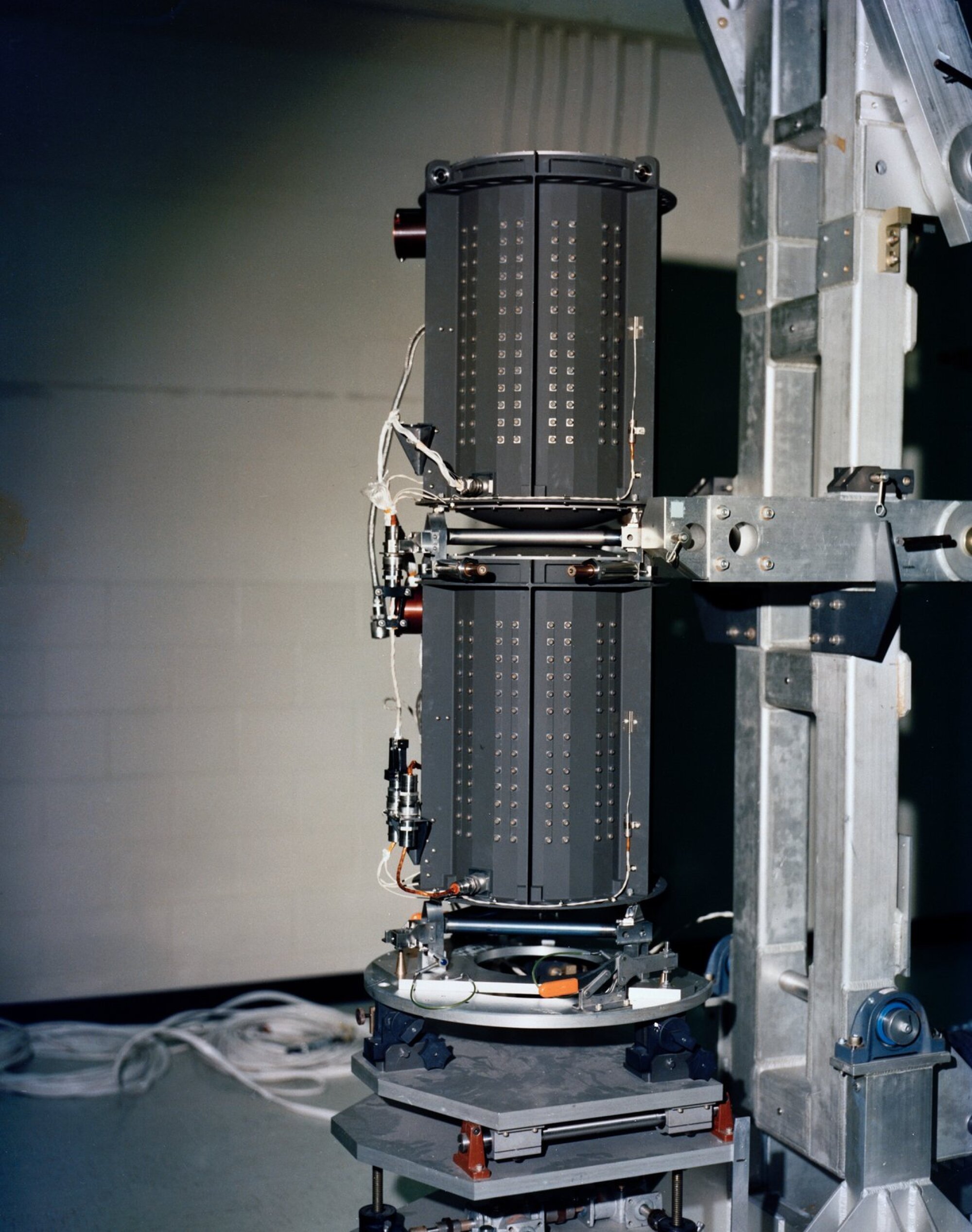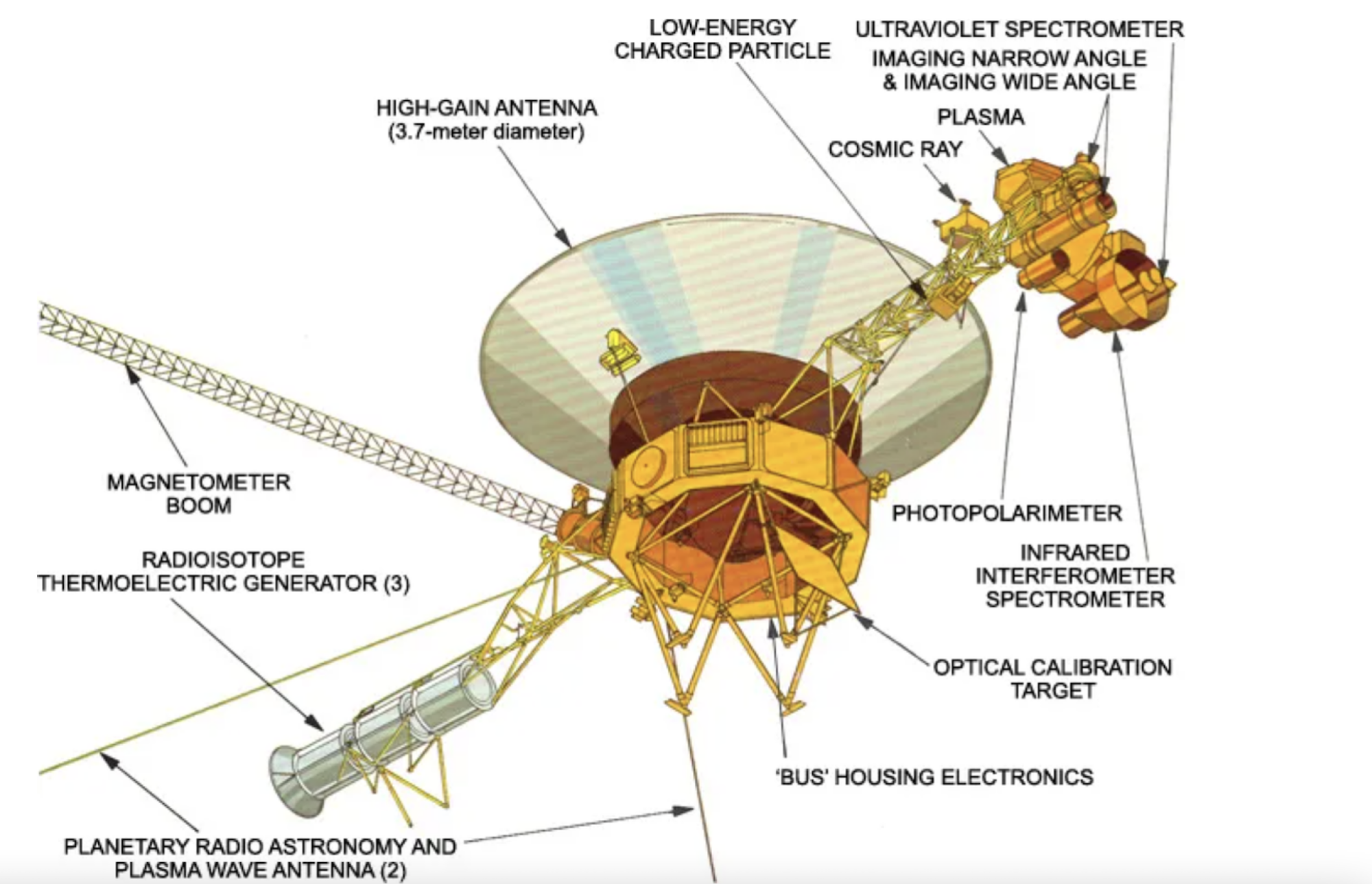Nuclear fuel lasts a long time. But not forever.
Both Voyager craft, launched in 1977, convert heat produced by the decay of radioactive plutonium-238 into electricity. Over the decades, NASA engineers have strategically shut off instruments to extend the life of Voyager 1 and 2, which are respectively well over 15 and 12 billion miles away. As their mission nears a half century, this fuel is dwindling, and the agency just turned off another gadget on Voyager 2, leaving it with four remaining science instruments.
“Mission engineers have taken steps to avoid turning off a science instrument for as long as possible because the science data collected by the twin Voyager probes is unique,” NASA said in a statement. “No other human-made spacecraft has operated in interstellar space, the region outside the heliosphere.”
The gadget the space agency shuttered on Sept. 26 is the “plasma science” instrument. It measured the flow of electrically charged atoms in space, particularly from the solar wind — a relentless flow of these particles from the sun. But in 2018, Voyager 2 left our solar system’s heliosphere — a protective bubble of particles and magnetic fields created by the sun and solar wind — and entered interstellar space. The instrument was rarely being used, so it could be sacrificed.
The four remaining instruments on Voyager 2 are:
– Cosmic Ray Subsystem (CRS): A particle detector that looks for the highest-energy types of particles, such as from other stars. “The CRS makes no attempt to slow or capture the super-energetic particles,” NASA explains. “They simply pass completely through the CRS. However, in passing through, the particles leave signs that they were there.”
– Low-Energy Charged Particles (LECP): Another particle detector, whose work overlaps with the Cosmic Ray Subsystem. The LECP captures energetic particles from planets, stars, and the greater galaxy.
– Magnetometer (MAG): This instrument measures the sun’s magnetic field and previously did so with the magnetic fields of Jupiter, Saturn, Uranus, and Neptune.
– Plasma Wave Subsystem (PWS): Two antennae that observed plasma environments near the outer planets and now do so in interstellar space.
Voyager 1 has the same last four instruments running, too.

Credit: NASA / JPL-Caltech

Credit: NASA / JPL-Caltech
The plutonium fuel supply will gradually produce less power as it loses 4 watts each year. A toaster uses 800 to 1500 watts, and, amazingly, each Voyager craft only generates around 249 watts.
Yet even with this dwindling power, the craft can still speak with NASA. To turn off the plasma science instrument, the agency beamed a radio signal 12.8 billion miles through space. It took 19 hours to reach Voyager 2, and another 19 to send a return message.
The space agency expects that the Voyagers have enough fuel to operate with “at least one operational science instrument into the 2030s.” Sometime that decade, the craft will likely lose its ability to communicate. Yet the greater mission of interstellar communication — as each craft packs information about our civilization — will carry on for billions of years.
Godspeed.
https://mashable.com/article/nasa-voyager-2-switches-off-instrument-power


